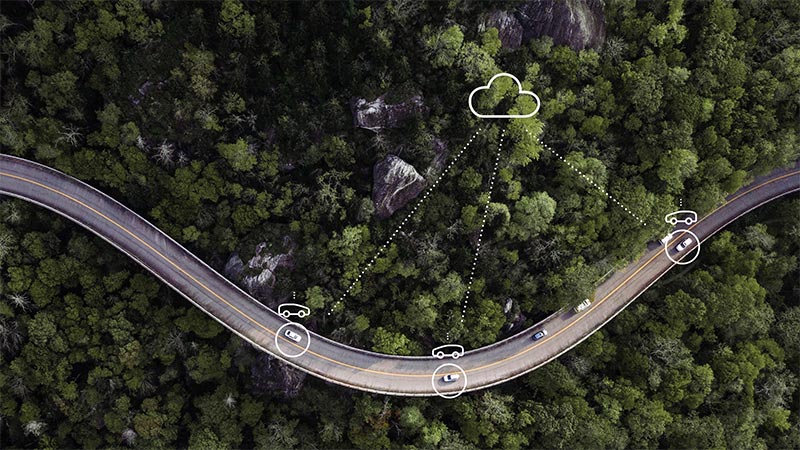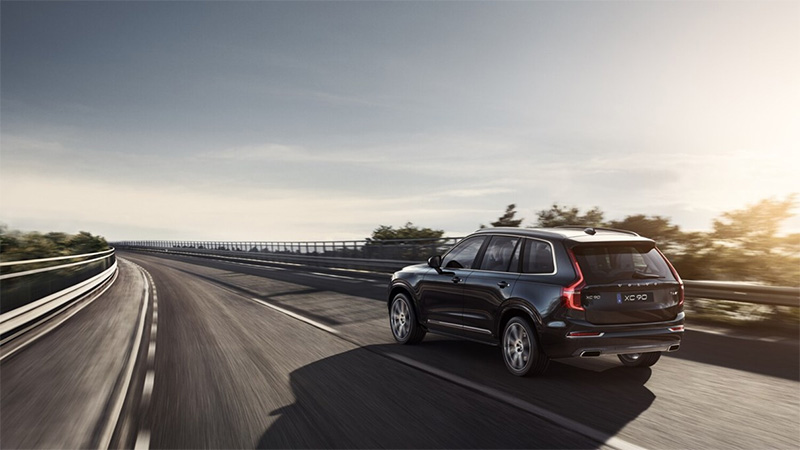
Autonomous or self-driving vehicles will be big in the future. Many different companies have developed technology in driving assistance, including Ericsson.
Ericsson has long been collaborating with various players, such as Volvo Cars and Veoneer, in projects that use Connected Vehicle Cloud. With 5G, additional opportunities are possible for this smart technical assistance system to make driving and traffic safer. We take a closer look at the technology, what it looks like today, and what it is expected to do in the future.
WHAT IS CONNECTED VEHICLE CLOUD?
Connected Vehicle Cloud (CVC) is the name of Ericsson’s digital service platform that enables vehicle manufacturers to quickly develop and manage new services for connected vehicles. Many car companies use the platform, or similar technology, to connect their vehicles and form their own vehicle ecosystems.
The solution support Advanced Driving Assistance (ADAS) as the first step towards self-driving cars. The solution is also used for other connected services such as:
- Raise service and maintenance issues with the vehicle
- Remote lock/unlock the car, turn the heating on/off
- Alert accident or engine failure
- Automated features such as bicycle detection, auto braking, parking, and tracking assistance
A short video on how the technology can assist emergency vehicles / © Ericsson and Veoneer
THE INTERNET CONNECTED CAR
Ericsson and Volvo Cars have been collaborating for a long time and together they developed the next generation of Volvo cars. The cars of the future will always be connected, but they must be further improved to become completely “aware” of the network, so-called Network-Aware Cars. In March 2020, the GREAT network organization in Gothenburg organized a digital conference, in which various company presentations were broadcast live over the Internet. There, Volvo Cars talked about the challenges that car manufacturers must face in the future.
At present, the vehicles produced by Volvo Cars are sold in over 120 countries, most of which have different Internet networks and providers. Despite the global differences in networks, the Internet connection is being embedded in the software which enables Android and Google to deliver their services directly to the cars. The built-in connection should automatically update the cars with the latest software versions. The idea is that in the future it will be possible to connect the car to the infrastructure itself, and to other vehicles, to make traffic safer.
A short video about Ericsson and the new technology / © Ericsson
THE IMPORTANCE OF 5G
To be able to offer completely seamless integration, 5G will be required. Thus, the traffic ecosystem capacity increases by speeding up the transmissions of data. In this way, it will be even easier for cars to communicate with other vehicles and with the cloud. This also includes service providers as well as traffic and regulatory authorities. 5G not only offers benefits to the automotive industry; other agents and systems can use it in order to develop fully. The internet of things – where different devices are connected to a common system and each other – is already growing and will need more power in the future.

THE FUTURE ACCORDING TO ERICSSON
To get a deeper insight, we put some questions to Charlotte Lundén, Head of Sales Readiness Connected Vehicles at Ericsson.
WHAT WILL HAPPEN T0 CVC IN THE FUTURE?
“[…] Ericsson is leading in research and development of radio and core networks in mobile/cellular connection. All our customers in the automotive industry will be able to take advantage of the continued development in 5G and automation, as well as how network-related services are linked to the Connected Vehicle Cloud for the best possible connected experience.”
HOW IMPORTANT IS 5G FOR CVC, AUTONOMOUS CARS AND THE INTERNET OF THINGS?
“5G is designed primarily to meet the needs of the industry. It is a system that is built to carry out, for example, self-driving vehicles, drone control, and remote surgery. The 5G network, characterized by delays of only milliseconds, high bandwidth, and dedicated quality capacity through “network slicing”, is a tool to fundamentally change the industry. It opens for opportunities and innovations that have not yet been possible today. Ericsson is world-leading in 5G implementations and we have connectivity as our core competence. This, in combination with our transport and automotive industry commitment, through Connected Vehicle Cloud and network-related services among other things, drive us and our goal to make connection easier for the automotive industry.”
MANY PEOPLE ARE WORRIED ABOUT 5G AND HOW IT WILL AFFECT HUMANS, ANIMALS, AND NATURE. WHAT DO YOU THINK ABOUT THAT? AND WHAT HAPPENS IF YOUR CAR HAS A BAD CONNECTION?
“The connected services in vehicles today are mostly a tool for improving the driving experience and supporting the driver by making recommendations. The driver is always responsible for the decisions in the vehicle. As we move on to the more advanced autonomous transport, the connection will increase in importance, and the demand for good mobile network quality and coverage around our roads will increase dramatically. It is important that the expansion of the infrastructure is able to meet the requirements of these autonomous transports to make it possible to fully utilize systems such as Assisted Driving and Autonomous Drive.”
WHAT WILL CVC MEAN TO TRAFFIC IN GENERAL, AND TO THE ENVIRONMENT?
“When vehicles are connected through the mobile network to other vehicles as well as to the transport ecosystem around them, improvements in traffic flow are possible and safety can be improved. […] An example is how safety for cyclists or road workers can be improved. The security systems of innovative Advanced Driver Assistance Systems (ADAS) can alert the driver that there are cyclists nearby to avoid collisions, even if the cyclists aren’t visible to the driver. Innovative driver safety systems can also alert drivers to roadwork long before they are visible to the drivers. When drivers are informed in time, they’re able to act, for example by reducing speed.”
When asked what is most important for securing the smart cars, driving assistance, and traffic of the future, the answer is both simple and obvious – 5G. One thing is certain, the future will be exciting – and connected!
Text: Ingrid Carlsson